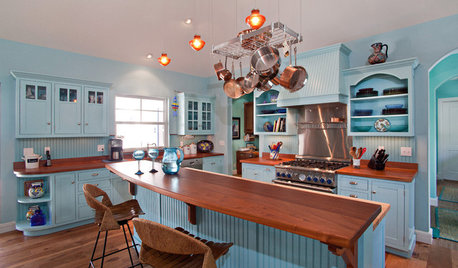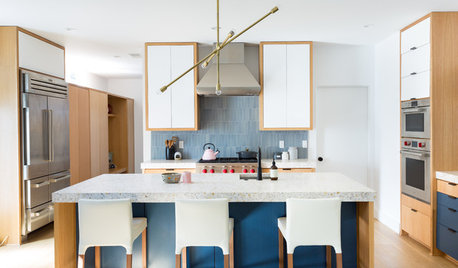Range hood help for NXR 36"
mommy2nk
11 years ago
Related Stories

5 Stunning Modern Range Hoods
Today's kitchen range hoods can look like sleek sculptures. Here's what to look for when you go shopping for one
Full Story
KITCHEN DESIGNHow to Find the Right Range for Your Kitchen
Range style is mostly a matter of personal taste. This full course of possibilities can help you find the right appliance to match yours
Full Story
KITCHEN DESIGNKey Measurements to Help You Design Your Kitchen
Get the ideal kitchen setup by understanding spatial relationships, building dimensions and work zones
Full Story
KITCHEN DESIGNHere's Help for Your Next Appliance Shopping Trip
It may be time to think about your appliances in a new way. These guides can help you set up your kitchen for how you like to cook
Full Story
STANDARD MEASUREMENTSKey Measurements to Help You Design Your Home
Architect Steven Randel has taken the measure of each room of the house and its contents. You’ll find everything here
Full Story
KITCHEN DESIGNWhat to Know When Choosing a Range Hood
Find out the types of kitchen range hoods available and the options for customized units
Full Story
HOUSEKEEPINGHow to Clean Your Range and Oven
Experts serve up advice on caring for these kitchen appliances, which work extra hard during the holidays
Full Story
KITCHEN DESIGNHow to Choose the Right Hood Fan for Your Kitchen
Keep your kitchen clean and your home's air fresh by understanding all the options for ventilating via a hood fan
Full Story
KITCHEN APPLIANCESThe Many Ways to Get Creative With Kitchen Hoods
Distinctive hood designs — in reclaimed barn wood, zinc, copper and more — are transforming the look of kitchens
Full Story
KITCHEN DESIGNA Cook’s 6 Tips for Buying Kitchen Appliances
An avid home chef answers tricky questions about choosing the right oven, stovetop, vent hood and more
Full Story





jwvideo
mommy2nkOriginal Author
Related Professionals
Fresno Kitchen & Bathroom Designers · Grafton Kitchen & Bathroom Designers · Hemet Kitchen & Bathroom Designers · Moraga Kitchen & Bathroom Designers · Soledad Kitchen & Bathroom Designers · St. Louis Kitchen & Bathroom Designers · Albuquerque Kitchen & Bathroom Remodelers · Luling Kitchen & Bathroom Remodelers · Toms River Kitchen & Bathroom Remodelers · Tulsa Kitchen & Bathroom Remodelers · Jefferson Valley-Yorktown Cabinets & Cabinetry · Lackawanna Cabinets & Cabinetry · Mount Holly Cabinets & Cabinetry · Potomac Cabinets & Cabinetry · Richardson Cabinets & Cabinetryweissman
mommy2nkOriginal Author
jwvideo
Nunyabiz1
mommy2nkOriginal Author
jwvideo
oceangirl67
mommy2nkOriginal Author
Nunyabiz1
mommy2nkOriginal Author
Nunyabiz1
mommy2nkOriginal Author
auntrainy